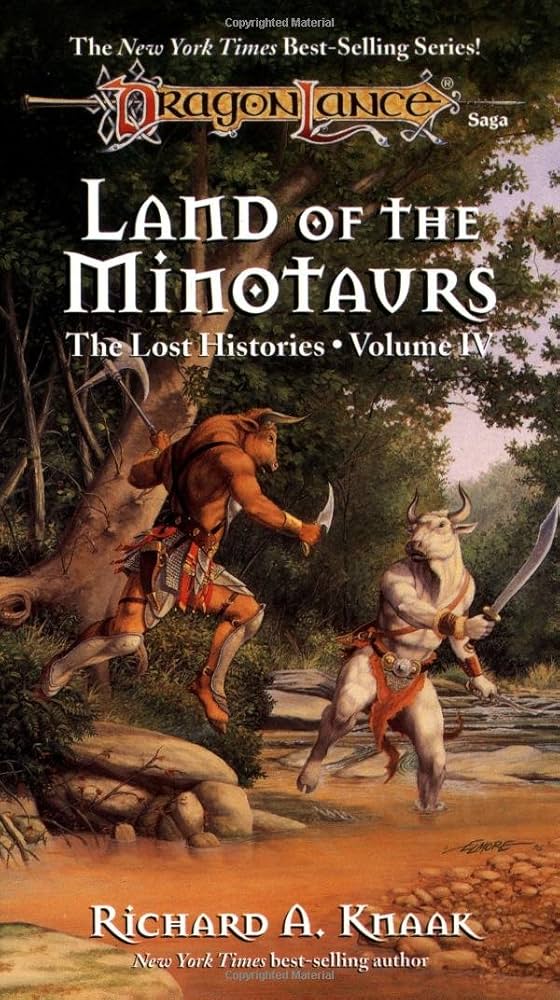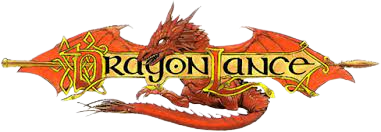Land of the Minotaurs

Table of Contents
ToggleOverview
Land of the Minotaurs returns to the life of Kaziganthi de-Orilg (Kaz)—former soldier of the Dragonarmies, companion of the legendary Huma Dragonbane, and one of the most unique and noble characters in Dragonlance lore. This time, Kaz must travel to Mithas, the legendary homeland of the minotaurs, where he finds himself caught between brutal politics, spiritual visions, and ancient prophecies.
Where Kaz the Minotaur was a personal redemption arc, Land of the Minotaurs is a cultural reckoning—an exploration of what it means to belong, to lead, and to challenge a society built on blood and dominance.
Main Character: Kaziganthi de-Orilg (Kaz)
- A bozak minotaur who has spent years trying to live by the code of honor instilled in him by his human friend, Huma Dragonbane.
- Deeply conflicted about his own race’s values—Kaz longs for peace, but finds that his people still worship war and strength.
- Thrust into the middle of a cultural and spiritual crisis, he must decide whether to stand against his people—or lead them to something greater.
Supporting Characters
- Briar – A young and idealistic minotaur who idolizes Kaz and serves as his hopeful protégé.
- Rytha – A cunning minotaur priestess of Sargas (the minotaur god of wrath and domination), who sees Kaz as a threat to the old faith, and seeks to manipulate or destroy him.
- General Juhg – A powerful and war-hungry leader of Mithas, emblematic of everything Kaz fears his people have become.
- Visions of Huma – While not physically present, Huma’s memory and legacy loom large, guiding Kaz and reminding him of the ideals he’s tried to uphold.
Setting
- The novel takes place in Mithas, one of the twin islands of the Minotaur Empire, known for its gladiatorial arenas, military rule, and strict hierarchies.
- The land is richly described—stone temples, iron-walled cities, treacherous jungles, and ceremonial halls reflect a harsh but proud civilization rooted in honor… but corrupted by cruelty.
Plot Summary
The Summons
Kaz receives a mysterious summons—he is called to the Land of the Minotaurs under the pretense of honoring his deeds during the Third Dragon War. Skeptical but intrigued, he journeys to Mithas, hoping to learn more about his origins and perhaps bridge the gap between himself and his people.
What he finds instead is a society steeped in violence, ruled by those who revere brutality over wisdom. His reputation as “Kaz the Betrayer” (for siding with Huma against the Dragonarmies) both inspires awe and hatred.
A Culture at War with Itself
Kaz discovers a growing schism among the minotaurs:
- One faction believes in the old ways—domination, might-makes-right, and strict worship of Sargas.
- Another faction sees Kaz as a symbol of a new path, where honor is earned through sacrifice and integrity, not bloodshed.
As political tensions rise, Kaz becomes the center of a prophecy, said to herald the return of a true leader who will reshape minotaur destiny.
Betrayal and Challenge
Rytha, the cunning priestess, attempts to control Kaz, fearing his influence. General Juhg, feeling his power threatened, challenges Kaz to the gladiatorial arena, hoping to kill him and solidify his own rule.
Kaz, though reluctant, accepts—not for glory, but to protect those who believe in something better.
The Final Test
In the climactic battle, Kaz must not only fight Juhg physically, but also confront the soul of his people—challenging them to see honor as something greater than violence.
He wins not only the duel—but the hearts of many, proving that the blood of the minotaurs does not need to drown their future.
Themes
- Honor vs. Brutality – Kaz fights not just enemies, but the ideology of dominance that defines his race. He stands for compassion, self-control, and moral strength.
- Legacy and Leadership – Kaz must decide what kind of leader and symbol he wants to be—and whether his legacy will be Huma’s ideals or his people’s rage.
- Belonging and Identity – As a minotaur raised in the human world, Kaz has always been an outsider. This book is about owning who he is, not who others want him to be.
- Faith and Prophecy – Rytha’s manipulation of religious doctrine contrasts sharply with Kaz’s spiritual respect for Huma and self-determination.
Tone & Style
- Mythic and philosophical, filled with internal monologue, cultural reflection, and moments of intense emotion.
- Combat scenes are brutal, but never gratuitous—every blow is meaningful in terms of character and theme.
- Less comedic than some Dragonlance stories—this is solemn, bold, and introspective, like an ancient warrior epic.
Reception
Land of the Minotaurs is beloved for:
- Deepening the lore of minotaur society in Dragonlance, portraying them as a complex people, not just monsters.
- Giving Kaz one of the most emotionally resonant and morally rich arcs in the entire setting.
- Blending myth, prophecy, and politics into a fantasy story that feels as much about the soul as the sword.
Some readers note:
- Slower pacing during cultural and political chapters.
- Less accessible if you haven’t read Kaz the Minotaur first—but still readable as a standalone.
Final Thoughts
Land of the Minotaurs is a heroic, soulful, and culturally rich journey through one of Krynn’s most misunderstood civilizations. It elevates Kaz from a memorable side character to a true legend, forging a new vision of what it means to be a warrior of honor in a world of chaos.
Recommended for:
- Fans of Kaz the Minotaur, The Legend of Huma, or character-driven fantasy
- Readers who enjoy cultural worldbuilding, political power struggles, and moral heroism
- Anyone looking for a story about what it means to choose your own path—even when the world calls you a monster
“To be a minotaur is to bear horns. But to be a hero is to choose how you use them.”
